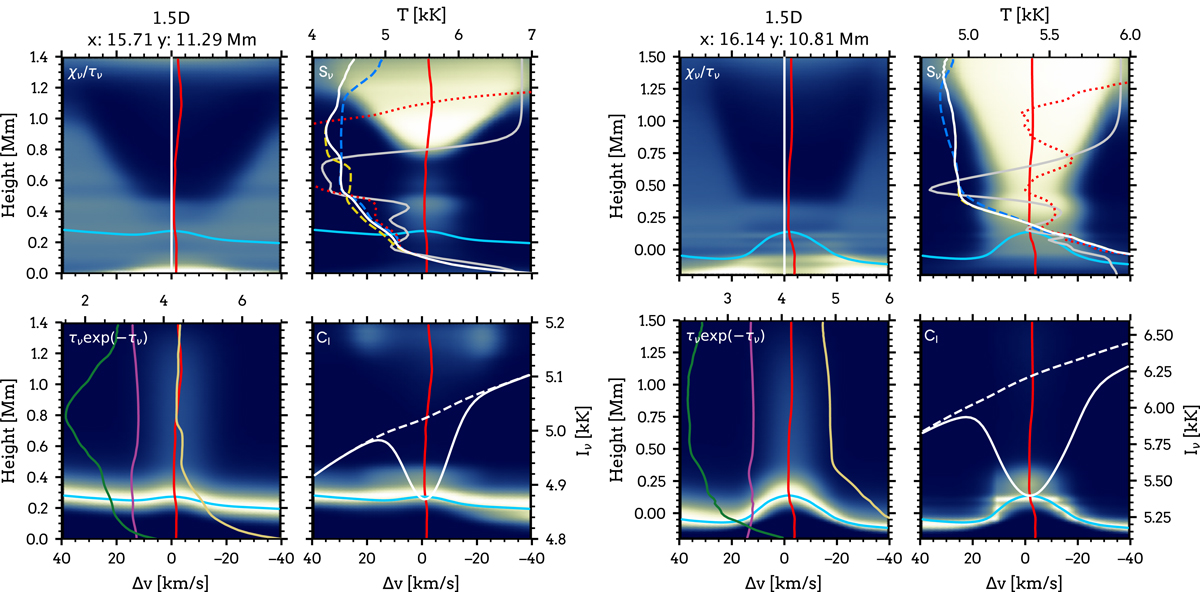Fig. 11.

Download original image
Hε four-panel diagrams for an intergranular lane (left) and a magnetic bright point (right). The locations of each point in the simulation are marked with orange and blue crosses in Fig. 10. Each diagram is organized as follows. Top left panels: relative χν/τν; sensitive to velocity gradients. Top right panels: Sν: relative source function. Solid white: total source function at rest wavelength. Dashed yellow: Hε source function. Dashed blue: background source function. Source functions are displayed in brightness temperature units with the scale at the top. Solid grey: ratio of Hε to total extinction (if Hε extinction dominates the grey curve is on the left side of the plot; if Ca II H extinction dominates on the right). Dotted red: atmospheric temperature profile. Bottom-left panels: relative τνe( − τν); indicates where most of the contribution to relative line intensity comes from. Solid green: ϵBν(Te). Solid violet: σJν. Solid gold: ηBν(T⋆). The three terms are displayed in brightness temperature units with the scale at the top. Bottom-right panels: CI; contribution to relative line depression. Solid white: Ca II H plus Hε line profile. Dashed white: Ca II H background line profile. Solid red: atmospheric vertical velocity profile. Solid light blue: τ = 1 height.
Current usage metrics show cumulative count of Article Views (full-text article views including HTML views, PDF and ePub downloads, according to the available data) and Abstracts Views on Vision4Press platform.
Data correspond to usage on the plateform after 2015. The current usage metrics is available 48-96 hours after online publication and is updated daily on week days.
Initial download of the metrics may take a while.


